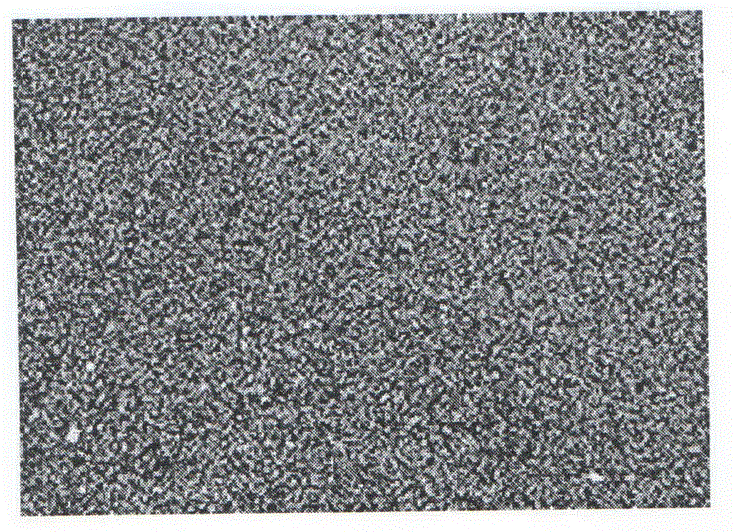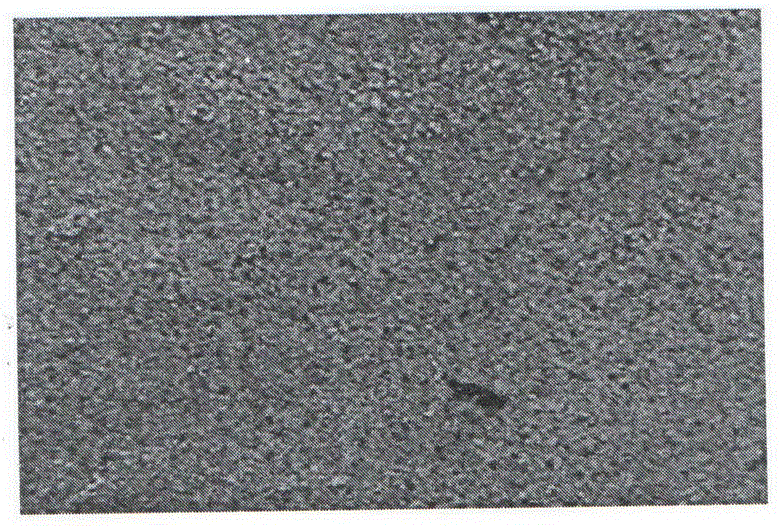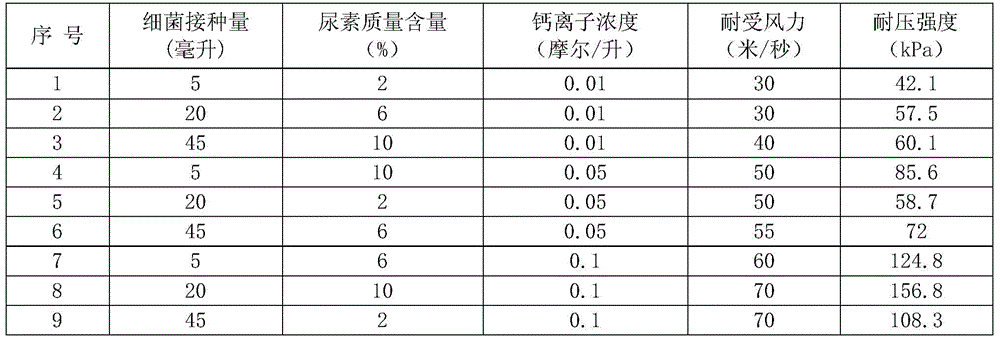A method of sand-fixing by using halo-tolerant bacteria
A technology of bacteria and bacteria liquid, applied in the direction of bacteria, chemical instruments and methods, applications, etc., can solve the problems of no successful application cases, difficult formation, etc., and achieve the effect of cost saving and simple operation
- Summary
- Abstract
- Description
- Claims
- Application Information
AI Technical Summary
Problems solved by technology
Method used
Image
Examples
Embodiment Construction
[0014] A method for sand-fixing by salt-tolerant bacteria according to the present invention, in the presence of urea and calcium ions, the method uses desert underground salt water to fix the surface sand by mineralization, and the specific operations are carried out according to the following steps:
[0015] a. Bacteria source and culture: select the bacteria as Bacillus sporosarcina pasteurii, the strain comes from the American Type Culture Collection, with the preservation number ATCC 11859, put the strain in the nutrient broth medium, and transfer it to the nutrient meat containing 50ml after recovery. In the Erlenmeyer flask of soup medium, adjust the pH to 4-11, then place the Erlenmeyer flask at a speed of 130 rpm and a temperature of 30°C for 48 hours to obtain the acclimatized and enriched bacterial liquid ;
[0016] b. Preparation of bacterium solution with inductive solidification effect: the bacterium solution obtained in step a is placed in urea containing 1-20% ...
PUM
 Login to View More
Login to View More Abstract
Description
Claims
Application Information
 Login to View More
Login to View More - R&D
- Intellectual Property
- Life Sciences
- Materials
- Tech Scout
- Unparalleled Data Quality
- Higher Quality Content
- 60% Fewer Hallucinations
Browse by: Latest US Patents, China's latest patents, Technical Efficacy Thesaurus, Application Domain, Technology Topic, Popular Technical Reports.
© 2025 PatSnap. All rights reserved.Legal|Privacy policy|Modern Slavery Act Transparency Statement|Sitemap|About US| Contact US: help@patsnap.com



